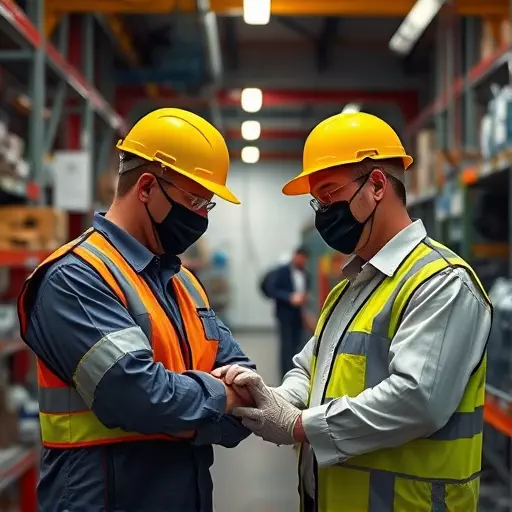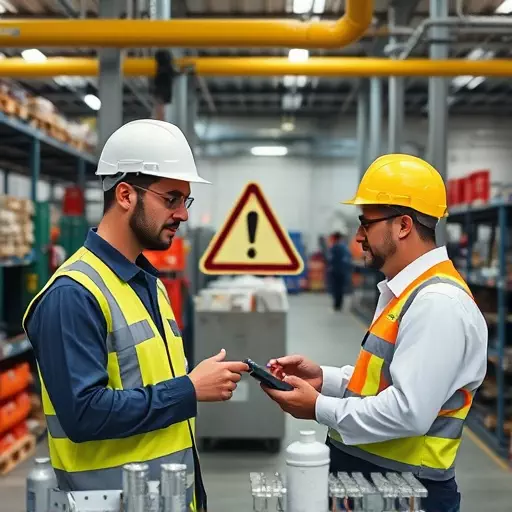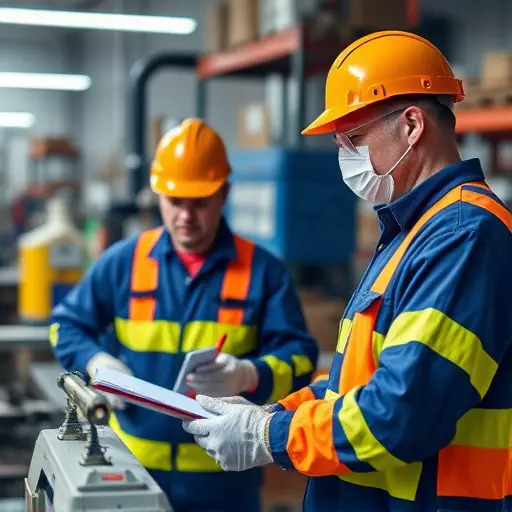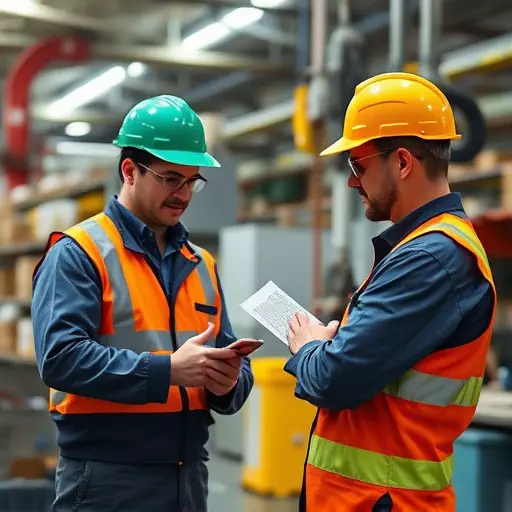Industrial hygiene consultants play a crucial role in workplace safety by conducting thorough workplace hazard evaluations to identify and mitigate chemical risks. They analyze chemical usage, worker tasks, and exposure routes, comparing these against Occupational Exposure Limits (OELs) to ensure worker health. Consultants' expertise helps implement risk mitigation measures, collaborate with stakeholders, and maintain compliance with safety standards, ultimately fostering safer industrial environments.
In today’s world, understanding chemical exposure assessment is paramount to safeguarding worker health. This comprehensive guide delves into the core concepts of this critical process, emphasizing the vital role of industrial hygiene consultants in hazard evaluation. We explore a structured workplace hazard evaluation process, highlighting best practices for thoroughness and accuracy. Furthermore, we dissect occupational exposure limits, offering insights into defining safe chemical levels. Finally, we present strategies for effective monitoring and risk mitigation, equipping professionals with tools to create safer work environments.
- Understanding Chemical Exposure Assessment: A Fundamental Approach
- The Role of Industrial Hygiene Consultants in Hazard Evaluation
- Workplace Hazard Evaluation: Step-by-Step Process and Best Practices
- Occupational Exposure Limits: Defining Safe Levels for Chemicals
- Strategies for Effective Monitoring and Risk Mitigation
Understanding Chemical Exposure Assessment: A Fundamental Approach

Chemical exposure assessment is a crucial process that forms the backbone of industrial hygiene and workplace safety. It involves systematic methods to identify, evaluate, and understand potential risks associated with chemical substances in the workplace. This comprehensive approach aims to protect workers by ensuring their health and well-being are not compromised due to hazardous chemicals. By employing specialized knowledge and tools, industrial hygiene consultants play a pivotal role in conducting these assessments.
The process begins with a thorough examination of various factors, including the nature of chemical usage, worker tasks, and potential routes of exposure. It then involves comparing these findings against established occupational exposure limits (OELs) to determine if risks exceed safe thresholds. This evaluation is essential for identifying workplace hazards and guiding the implementation of control measures to mitigate risks effectively.
The Role of Industrial Hygiene Consultants in Hazard Evaluation

Industrial hygiene consultants play a pivotal role in workplace hazard evaluation, particularly when it comes to identifying and mitigating chemical risks. These experts possess specialized knowledge in understanding how chemicals can affect workers’ health over time, even at low exposure levels. They conduct thorough assessments to determine the potential hazards associated with various substances, taking into account factors such as chemical composition, usage patterns, and worker activities. By employing advanced techniques and tools, industrial hygiene consultants can measure and evaluate occupational exposure levels, ensuring they are below established occupational exposure limits.
Their expertise extends to analyzing existing control measures, designing effective strategies for risk reduction, and providing recommendations to create safer working environments. These consultants often collaborate with employers, regulatory bodies, and other stakeholders to ensure compliance with safety standards and regulations, ultimately safeguarding the well-being of employees in industrial settings.
Workplace Hazard Evaluation: Step-by-Step Process and Best Practices

Conducting a thorough Workplace Hazard Evaluation is paramount to ensuring worker safety and health in industrial settings. This multi-step process begins with identifying potential hazards present in the workplace, including chemical exposures. Industrial hygiene consultants play a crucial role here by conducting site assessments, collecting air and surface samples, and analyzing data to pinpoint hazardous substances.
Once identified, these chemicals are evaluated against established occupational exposure limits (OELs). OELs, set by regulatory bodies, dictate safe levels of substance exposure over specific periods. Any deviation from these limits requires immediate action, such as implementing engineering controls, improving ventilation systems, or providing personal protective equipment to safeguard workers and mitigate risks effectively.
Occupational Exposure Limits: Defining Safe Levels for Chemicals

Occupational Exposure Limits (OELs) are critical in defining safe levels of chemical substances in the workplace, ensuring the well-being of employees and adhering to industrial hygiene standards. These limits, established by regulatory bodies and industrial hygiene consultants, set permissible concentrations or exposure duration for various chemicals. They serve as a crucial component of a comprehensive workplace hazard evaluation, guiding employers on implementing necessary controls to minimize risks.
The determination of OELs involves extensive research and data analysis on the toxicological effects of chemicals. Regulatory agencies consider studies on animal and human health, taking into account acute and chronic exposure scenarios. These limits ensure that workers are not exposed to hazardous levels of substances, thus preventing potential health issues such as respiratory problems, skin irritation, or long-term chronic diseases. Regular review and updates of OELs are essential to reflect the latest scientific findings and adapt to evolving industrial practices.
Strategies for Effective Monitoring and Risk Mitigation

Effective monitoring and risk mitigation are key aspects of chemical exposure assessment. Industrial hygiene consultants play a pivotal role in this process by conducting comprehensive workplace hazard evaluations. They employ advanced techniques to measure and analyze chemical exposures, ensuring compliance with occupational exposure limits. Regular sampling and personal protective equipment (PPE) utilization are fundamental strategies to minimize worker risks.
Consultants also recommend engineering controls, such as improved ventilation systems or enclosed work stations, to prevent or reduce chemical exposure at the source. Additionally, they educate employees on proper handling procedures, safe work practices, and the importance of adhering to safety protocols. By integrating these strategies, organizations can create a safer working environment, protect their workforce, and maintain regulatory conformity.


